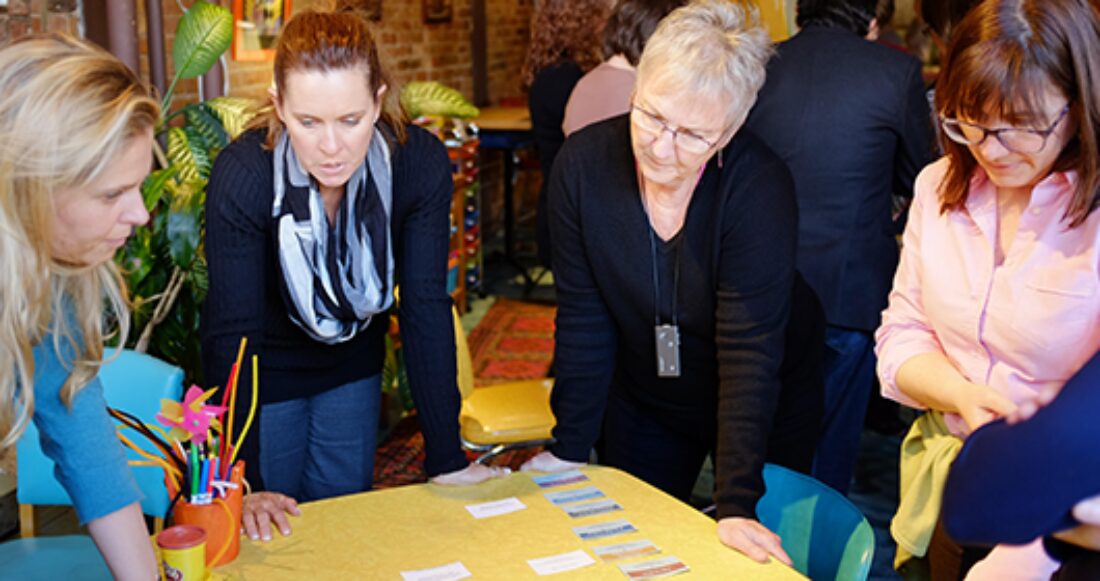Inspiring New Ways of Thinking and Acting to End Hunger

Feeding America, a nationwide network of food banks, has launched a major multiyear initiative to address the root causes of hunger.
The initiative, called Collaborating for Clients (C4C), pushes Feeding America beyond its core comfort zone — food distribution service — by bringing nonprofits together to address food insecurity and help families find affordable housing, job training, steady employment and health care services. Feeding America has launched the initiative with five pilot sites focused on leveraging food distribution services and building collaborative partnerships that can help improve the lives of low-income families and communities.
This groundbreaking work — and expanded network focus — calls for new leadership skills and strategies, which is why Feeding America has turned to the Annie E. Casey Foundation to provide training in results-based leadership (RBL).
Aware of Casey’s RBL work with the StriveTogether national network and the federally funded Promise Neighborhoods, Feeding America asked the Foundation to help develop its FEED Leadership Program (Fuel, Engage, Empower, Drive Leadership for Community Change).
“The leaders in the Feeding America network are great at technical solutions that are really efficient,” Jessica Jelinski, managing director of national programs at Feeding America. “We realized that C4C is such a different way of working for our network that we’ve got to provide not just technical training but really provide support to the food banks so that they can begin to think differently.”
In September 2016, Casey staff and the Foundation’s RBL faculty began working with the initiative’s five pilot sites to help them articulate specific population-level results and establish systems and mechanisms for achieving them. The site teams include leaders from the food banks as well as representation from the health, faith, government, philanthropy and nonprofit sectors in their communities. A work in progress, the FEED Leadership Program is midway through a series of seven two-day seminars and site visits focused on helping C4C leaders apply the core competencies and principles of RBL.
Through discussions, exercises, teaching and practice, the Foundation has been helping these sites:
- develop and execute an action plan with clearly identified strategies;
- address adaptive and technical leadership challenges that arise when managing competing interests among diverse, cross-sector partners;
- build the capacity of leaders and practitioners to use data for continuous improvement of action plan strategies;
- make mid-course corrections as the landscape shifts and new priorities emerge; and
- build the organizational and community capacity needed for sustaining results work over the long term.
“Working with a diverse group of stakeholders, the sites are seeing the interconnection of their own work to other results areas and figuring out how they can contribute to results that might not be their primary work focus,” says Casey Senior Associate Jennifer Gross.
Perhaps most importantly, the FEED Leadership Program seeks to motivate the sites to move from planning to action. “It’s been really amazing,” says Jelinski. “Because of our participation in the FEED program, and its bias to action, we’ve really seen a clear shift in the thinking of the pilot sites and their community partners, as well as at the Feeding America national office.”
Learn more about results-based leadership
Learn more about Feeding America’s Collaborating for Clients initiative






